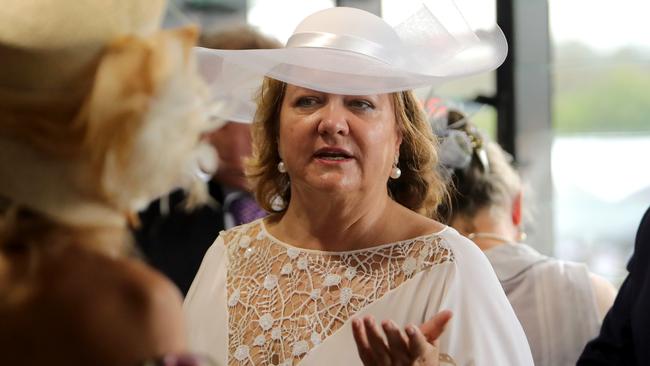Hancock battle: key contract under the microscope
Wright Prospecting relinquished its share of the Hope Downs iron ore deposits to Hancock in exchange for a royalty they say has never been paid.

A contractual clause relied upon by Gina Rinehart and Hancock Prospecting in their battle with the descendants of her father’s former business partner is no “golden bullet”, her opponent’s lawyers say.
A 1987 agreement between Hancock Prospecting and Wright Prospecting – known as HPPL and WPPL respectively – was at the centre of proceedings in the West Australian Supreme Court on Wednesday as lawyers for WPPL, the family business belonging to the children and grandchildren of Pilbara iron ore pioneer Peter Wright, continued to outline their case.
WPPL is fighting for hundreds of millions of dollars of royalties that it says it is owed from HPPL’s Hope Downs iron ore mines, as well as a half-share – estimated to be worth more than $1bn – in the big East Angelas iron ore deposits.
Julie Taylor SC, representing WPPL, said Mrs Rinehart’s HPPL was relying on a clause under that 1987 agreement that saw WPPL relinquish its rights in the Hope Downs iron ore deposits in exchange for a royalty over future production.
No royalty has ever been paid.
Clause 5 under that contract, she said, allowed either party to carry out prospecting and develop projects they discovered, even on leases once held by the partnership, without needing to pay the other royalties or offer them the opportunity to join in the project.
She said the clause had been highlighted in HPPL’s court submissions in its arguments as to why it should not have to hand over anything to WPPL for either Hope Downs or East Angelas.
Yet that clause, Ms Taylor said, was meant only to apply to brand new deposits discovered as a result of prospecting rather than the exploitation of resources previously identified by the groups when they were working in partnership: “Clause 5 is not the golden bullet that HPPL presents it to be.”
East Angelas was stripped off Lang Hancock and Wright by the WA government in the 1970s, amid a belief that larger foreign companies would be more capable of developing a steel industry around the assets. After years of intense lobbying by the pair, the assets were returned in the 1980s.
Ms Taylor said it could not be denied the East Angelas exploration licences were obtained as an asset of the Hancock-Wright partnership rather than Hancock alone. In securing those rights, Ms Taylor said Hancock used the letterhead, staff, goodwill and reputation of the Hancock-Wright partnership.
“HPPL used the resources of the partnership to obtain the renewed rights over those areas,” she said. “That was not an accident.”
The partnership’s history as the “previous discoverer” of the East Angelas iron ore, she said, set it apart from other groups trying to secure the assets from the state government.
The inherent value of the East Angelas prospects was already well established by the early 1990s. Shortly before his death, according to meeting notes read into court by Ms Taylor, Lang Hancock remarked that the value of East Angelas and the nearby Mystery deposits would prove more valuable than the $20bn value attributed to the Marandoo iron ore deposits in an ABC news report.
Ms Taylor has spent the week tracing through multiple letters and records documenting the complex history of Hope Downs and East Angelas deposits dating back to the 1960s, when Hancock and Wright first began building what would become their incredibly valuable iron ore businesses.
The two had tried to orchestrate a division of assets in the hope of avoiding future legal disputes between their children, but there have since been multiple courtroom battles over the assets.
While WPPL relinquished its interests in the Hope Downs assets, it says it should still be receiving a royalty from the assets.



